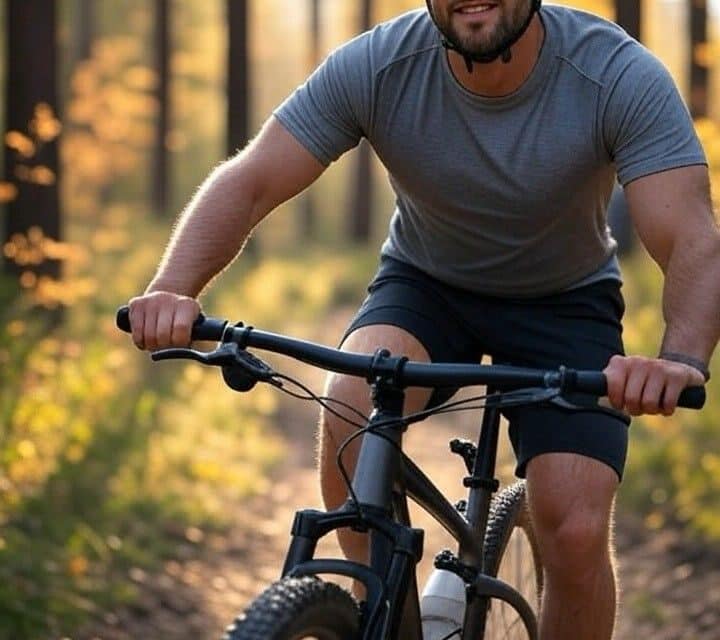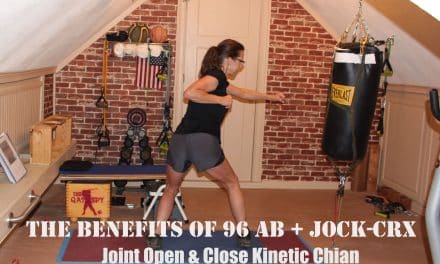Age-Defying Heath Benefits of Bicycling: A Comprehensive Guide to Cardio, Aerobic Exercise, and Strength Training for a Full-Body Workout. Bicycling is more than just a mode of transportation or a leisurely pastime—it’s a dynamic, full-body age-defying workout that delivers profound cardiovascular, aerobic, and muscular benefits.
Whether you’re pedaling through a serene park, tackling a steep mountain trail, or spinning in a high-energy indoor cycling class or gym, biking engages multiple systems of the body, promotes heart health, strengthens muscles, and enhances overall fitness. This article explores how bicycling provides exceptional cardio and aerobic exercise, boosts upper and lower body strength, fortifies the back, and helps achieve Target Heart Rate (THR) for optimal health results regardless of age.
Cardiovascular and Aerobic Benefits of Bicycling
At its core, bicycling is a powerhouse for cardiovascular and aerobic fitness. Cardiovascular exercise strengthens the heart, lungs, and blood vessels, while aerobic exercise enhances the body’s ability to use oxygen efficiently during sustained physical activity. Bicycling offers a low-impact yet highly effective way to elevate heart rate and improve endurance. This is perfect for those like me who have knee, hip, and lower back issues.
When you pedal, your heart rate increases to pump oxygen-rich blood to working muscles, improving circulation and reducing the risk of heart disease, stroke, hypertension, and an age-defying component. According to the American Heart Association, regular aerobic activities like cycling can lower blood pressure, improve cholesterol levels, and reduce the risk of cardiovascular events by up to 50%. Bicycling for at least 150 minutes (or 2.50 hours) per week at a moderate intensity (10 to 12 mph) —or 75 minutes (1.25 hours) per week at a vigorous intensity (16 to 18 mph)—meets the recommended guidelines for aerobic exercise, making it an accessible option for people of all fitness levels.
The aerobic benefits of cycling are equally impressive. As you ride, your lungs work harder to supply oxygen to your muscles, enhancing lung capacity and efficiency over time. This improved oxygen utilization boosts stamina, allowing you to perform daily tasks with less fatigue, especially outdoors. Studies show that regular cycling can increase aerobic capacity by 3-7% in as little as 12 weeks, even in previously sedentary individuals. Whether you’re cycling outdoors or on a stationary bike, the rhythmic, repetitive motion keeps your heart and lungs engaged, delivering a steady-state aerobic workout that burns calories and improves metabolic health.
Elevating Target Heart Rate for Optimal Fitness
One of the key advantages of bicycling is its ability to help you reach and maintain your target heart rate, a critical metric for maximizing cardiovascular and aerobic benefits and burning stubborn belly fat. Your target heart rate is typically calculated based on taking 220 minus your age times 80%. For example, my target heart rate since I am 68 is (220 – 68) x 0.80 = 121 bpm. Since I model and do photoshoots for our aviation club, I like to reach a higher heart rate of (220 – 68) x 0.85 = 130 bpm for maximum benefit where I try to keep my speed up to 16 to 17 mph. For those that want a moderate heart rate try to reach 14 to 15 mph speed.
Bicycling is uniquely versatile in helping you hit your THR that yoga and strength training can’t provide. A leisurely ride at 10-12 miles per hour may keep you in the lower end of your target heart rate, ideal for fat-burning and endurance-building. Crank up the intensity with sprints, hill climbs, or a spin class, and you’ll push into the higher end (16 to 17 mph), enhancing cardiovascular strength and calorie burn. Wearable fitness trackers or bike-mounted heart rate monitors can help you stay in your desired zone, ensuring you’re optimizing your workout.
Interval training on a bike—alternating short bursts of high-intensity pedaling with periods of recovery—is particularly effective for elevating heart rate and improving fitness. Research published in the Journal of Applied Physiology found that high-intensity interval training (HIIT) on a bike can improve cardiovascular health and insulin sensitivity in as little as two weeks. By varying speed, resistance, or terrain, cyclists can tailor their rides to achieve specific heart rate goals, making biking a customizable and efficient exercise modality.
Strengthening the Lower Body
Bicycling is renowned for its ability to sculpt and strengthen the lower body. The primary muscles engaged during cycling include the abdominal area, quadriceps, hamstrings, gluts, and calves, all of which work in concert to power each pedal stroke. This repetitive motion builds muscle endurance and strength, leading to toned legs and improved functional fitness.
- Quadriceps: Located at the front of the thigh, the quads are heavily activated during the downward push of the pedal, particularly when climbing hills or sprinting.
- Hamstrings: These muscles, at the back of the thigh, engage during the upward pull of the pedal, especially when using clipless pedals or toe clips that allow for a full pedal stroke.
- Gluts: The gluteus maximus, one of the body’s strongest muscles, drives powerful pedaling, contributing to hip stability and lower body strength.
- Calves: The gastrocnemius and soleus muscles in the calves contract to stabilize the foot and ankle, particularly during the push phase of pedaling.
Regular cycling can increase lower body muscle mass and strength by 5-10% over several months, according to studies in Sports Medicine. Stronger legs not only enhance cycling performance but also improve mobility, balance, and resilience in daily activities like walking, climbing stairs, or lifting objects.
Building Upper Body and Core Strength
To maximize your muscle strength and mass, precede your aerobic-cardio bike exercise with warm-up using Pilates followed by strength training. This offers a dual benefit besides strengthening your body’s muscular system, strength training allows your muscles to release a natural growth hormone that contains collagen to repair, rejuvenate, and replace your body’s cells at a faster rate for an age-defying component that surpasses any other age-defying product on the shelves or on television advertisement. Below, I did a photoshoot last October 2024 for a promo for our annual classic car and Airshow we hold at our hangar. In this photograph posing with Tiffany, I am 67- years old. Strength training with cycling provides you an age-defying advantage, not by years, but by decades.

While cycling is often associated with leg strength, it also engages the upper body and core, particularly during dynamic or outdoor rides. Holding the handlebars, steering, and maintaining balance recruit muscles in the arms, shoulders, and chest, while the core stabilizes the body to maintain proper posture.
- Arms and Shoulders: The biceps, triceps, and deltoids work to grip and maneuver the bike, especially during off-road cycling or when standing to climb hills. Mountain biking, in particular, demands significant upper body strength to navigate rough terrain.
- Chest and Back: The pectoral muscles and upper back (trapezius and rhomboids) engage to support the torso and maintain an aerodynamic position.
- Core: The abdominal muscles, obliques, and lower back (erector spinae) stabilize the pelvis and spine, preventing excessive swaying during pedaling. A strong core is essential for efficient power transfer from the upper body to the legs.
Indoor cycling classes often incorporate upper body exercises, using dumbbell lifts or push-up variations on the handlebars, to further enhance arm and shoulder strength. Over time, these efforts contribute to a balanced physique and improved posture.
Fortifying the Back
Bicycling is an excellent exercise for strengthening the back, also, particularly the lower back muscles, which are critical for spinal health and injury prevention. The erector spinae muscles, which run along the spine, work continuously to maintain an upright or slightly forward-leaning posture during cycling. This engagement helps alleviate lower back pain, a common issue for many adults, by improving muscle endurance and spinal stability. I am all too aware of lower back issues with disc problems.
Proper adjustment to your bike is crucial to maximize back benefits and avoid strain. A saddle that’s too high or handlebars that are too low can lead to excessive spinal flexion, causing discomfort. You want to keep the back straight as possible while riding. Working with a professional bike fitter or adjusting your bike to ensure a neutral spine position can enhance comfort and back strength. Research in the Journal of Back and Musculoskeletal Rehabilitation suggests that regular cycling can reduce chronic lower back pain by up to 50% in some individuals, thanks to improved muscle tone and circulation. I have personally benefited from cycling after my Pilates and strength training.
For cyclists with per-existing back issues, recumbent bikes offer a supportive option. These bikes allow you to sit in a reclined position, reducing pressure on the spine while still providing a robust cardio and lower body workout.
Additional Benefits of Bicycling
Beyond its physical benefits, bicycling offers mental and lifestyle advantages that enhance overall well-being. Cycling outdoors exposes you to fresh air and nature, reducing stress and boosting mood through the release of endorphins. In my gym that is in the attic space over my garage, I wallpaper the walls in brick wallpaper to provide an outdoor look. The best money I spent renovating my house was converting the attic space over my garage into my personal gym. My gym isn’t heated or air conditioned so I can do heat training during at least 6 months of the year where temperatures can reach 118° Fahrenheit in my gym. Kid Rock uses Heat Training to stay in shape.
Group rides or cycling clubs foster social connections, combating loneliness and promoting motivation. As a low-impact exercise, biking is gentle on the joints, making it suitable for people with arthritis or those recovering from injuries.
Bicycling is also environmentally friendly and cost-effective, serving as a sustainable alternative to driving for short commutes. It burns approximately 400-1,000 calories per hour, depending on intensity, supporting weight management and metabolic health. For those seeking variety, cycling offers endless options—from road biking and mountain biking to gravel riding and indoor spin classes—ensuring there’s a style for every preference and fitness level. I can burn 535 calories during a 75 minute workout. After our October 2024 photoshoot, I did an AB Challenge photograph, below:

Conclusion
Bicycling is a versatile, accessible, and highly effective exercise that delivers a trifecta of benefits: cardiovascular and aerobic fitness, full-body strength, targeted heart rate elevation, and an age-defying element if preceded by strength training. By engaging the lower body, upper body, core muscles, and back, cycling builds a strong, balanced physique while reducing the risk of chronic diseases. Whether you’re a beginner pedaling through your neighborhood or an advanced cyclist conquering challenging trails, biking offers a path to improved health, vitality, and defies your age. So, hop on a bike, find your rhythm, and pedal your way to a fitter, stronger you.
Amazon.com: THE SARSO DIET & FITNESS Program: An age-defying turbocharged-calorie-burning-juggernaut diet and fitness program to get you into the best shape of your life, even over the age of 60 eBook : Boatright, Charles W.: Kindle Store:
My Latest Book:
Amazon.com: The Sayeret Warriors of Rephaim: Sayeret Matkal is one of Israel’s most Elite Secret Commando Rescue, Reconnaissance, and Black Ops Units in the World like their Raid they executed on Entebbe in 1976: 9798317331818: Boatright, Charles W.: Books




